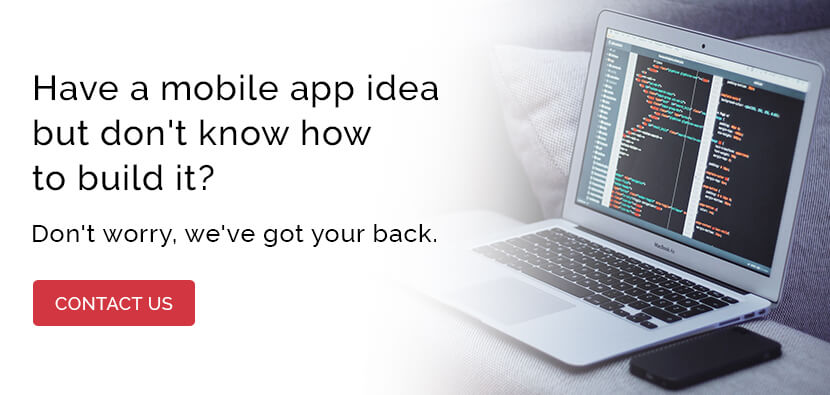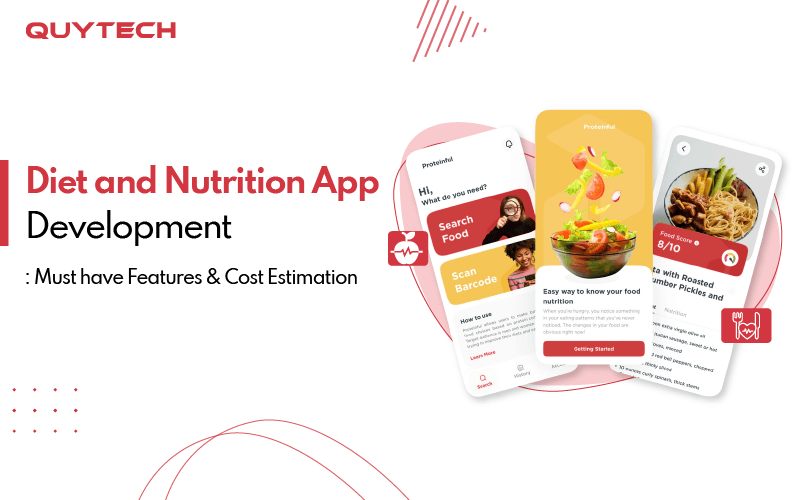Today, people are becoming aware of the health issues caused by sedentary lifestyles and obesity. Another reason is that they are adopting a healthy lifestyle by counting and tracking their daily calorie intake. All these reasons collectively raise the demand for diet and nutrition applications.
Basically, a diet and nutrition app comes with lots of benefits. It helps users in:
- To keep track of daily intake
- To monitor calories intake and consumed
- To provide you with guidance on healthy and nutritious food
- To create a personalized meal plan
- To consult with the best dieticians and nutritionists around you
- To know the ingredients in your meal
You know what, from 2020 to 2027, the mHealth market is predicted to grow at a CAGR of 22.3 percent, from $ 46,048 million in 2019 to $ 230,419 million in 2027.
If you also want to be a part of this, then choosing a diet and nutrition app development is a great idea. But, here are the things you should know!
There are many things involved in app development, like what features need to be included. Key development steps, and how much will it cost?
Don’t panic; as the top healthcare app development company, we’ve decided to curate an in-depth blog covering all the aspects of diet and nutrition planning apps.
So, let’s begin with,
Why Invest in Diet Planners and Nutrition App Development?
Well, there are many reasons for it!
Below are a few of the reasons why diet app development is in demand:
- Great retention rate
- Growing demand
- Easy connectivity with wearables
- Offers valuable insights on diet and nutrition
- Provides personalized meal plan
Moving on, let’s talk about,
What are the must-have Features that make Diet and Nutrition App Development a Big Hit?
Well, the features are the most important part of the application. You need to be very clear before selecting the functionalities for your diet and nutrition app. As a prominent healthcare app development company, below, we’ve mentioned some features that you can consider. So, have a look!
- Check BMI – Body Mass Index (BMI) is one of the most important features of diet and nutrition tracking apps. This feature prompts users to enter information such as height, weight, gender, allergies, and more as soon as they register or sign in to an app. It provides a complete report based on the information provided, which assists professionals in creating a tailored nutrition plan and allowing users to reach their fitness goals.
- Count calories – With a calorie counter, your users can measure their food consumption in the form of calories consumed. It also keeps track of the calories burned during workouts and any physical activity undergone throughout the day. This feature is essential for those who are trying to maintain their weight.
- Barcode scanner – Entering nutritional information manually every time a user consumes something is tedious. A diet and nutrition app with a barcode scanner can be a savior. As most package items come with a barcode, the user can scan it on the go and check out its nutritional values.
- Push notifications – Push notifications to help increase user engagement and retention. For diet and nutrition apps, push notifications can help share essential diet and nutrition tips, send reminders or information about their fitness goals, remind them about meals, and more. However, you must be careful about the frequency of notifications that an app sends. Sending notifications more frequently might annoy the users, and they may end up blocking them.
- Live chat – You can add a live chat feature with the help of which users can connect with the nutritionists to avail of the necessary information. To make this feature successful, your app must first analyze the user’s eating habits and goals.
- Wearable device integration – According to Statista, the number of connected wearable gadgets in the globe will exceed 1 billion by 2022. In addition, the number of people who use fitness trackers is growing. As a result, adding wearable device support to your diet and nutrition app is critical. The app automatically logs the user’s health data, like heart rate and blood pressure, as well as physical activities such as jogging, walking, running, cycling, and so on, with this support.
- Video consultation – There are times when a user might require some recommendations from trainers regarding their diet or exercise schedules. Adding this feature to the diet and nutrition app will add convenience to your users as the experts will be available just a tap away.
Apart from these, some other features that you can include in your custom diet and nutrition planning app are:
- Log food intake
- Profile management
- Suggestions and tips
- Leaderboard
- Real-time analytics
- Dashboard
- Set goals
- Social sharing
- Live chat
Moving forward, let’s discuss this,
How to Develop a Diet and Nutrition App? Key Points to Consider!
If you’re an entrepreneur wanting to create such an app, there are a few key development steps you should be aware of like:
#1. Choose the App Category
You can categorize diet and nutrition apps based on their features and functionalities. Some applications are built to help users eat healthy foods, whereas some help them lose weight. Whereas, there are fitness freaks who monitor their diet and calories every day while some of them use these applications to cook simple, tasty, and healthy food.
Depending on your audience, you must first decide which of the following diet and nutrition apps you want to build:
- Fitness/Workout app
- Healthy eating app
- Diet app
- Weight loss app
#2. Design Efficient UI/UX
The way your apps look and feel is important. Popular health applications always have both – they’re visually appealing and incredibly efficient and useful. UX and UI designers not only develop appealing representations (mockups) for the future app at this stage, but they also figure out how the app will work and how the end-user will interact with it.
#3. Select the Right Monetization Model
Of course, the goal of your mobile app is to make money. And to do so, you’ll need to think about and test a variety of monetization options to see which model is perfect for you. The following are some well-known healthcare revenue models:
- Subscription-based model – In this model, the complete app or a subset of its functionality is available only through subscription. To take advantage of the app’s features, users must pay a monthly or annual subscription fee.
- Advertisements within the app – It is completely free to use; however, it does display pop-up ads in the form of pictures or videos to users.
- Premium – Although the app is free to use, there are certain premium features that must be paid for.
#4. Choose the Right Platform
Which is better, iOS or Android? It’s not an easy decision. In truth, determining whether to develop an app for Android or iOS is influenced by a number of factors, including your target audience, app functionalities, project duration, and budget.
When choosing between these two platforms, keep in mind your target audience’s geographic area. In the US, for instance, iOS devices are more prevalent, but Android is more widely known in other regions of the world.
Of course, if you want to reach a large audience, you can develop native apps for both iOS and Android.
#5. Do Test the App
The potential of app testing is enormous. Conducting app testing from the beginning can assist you in swiftly identifying user experience and concerns. It will also help you in responding to user input and continuously improve the app.
An additional reason to test your app is to learn what your users think of it and what they expect from it. Testing allows you to tweak or redesign a feature or function early on and adjust it to meet the needs of users. If something goes wrong after the launch, app testing will spare you from disgrace.
What Is the Cost of Diet and Nutrition App Development?
To have a rough estimate of the cost of developing a diet and nutrition app, you have to have the answers to the following questions!
- What is the size and location of the development company you hired?
- Which platform do you want to release your app on?
- What will be the technology stack for your app?
- When will you want your project to accomplish?
- What are the features of the app?
- Tech stack
These are some of the aspects that impact the app development cost. Roughly, it will cost you somewhere between $65,000 to $1,50,000.
If you want, experts at Quytech can help you evaluate the actual cost of developing an app. But for that, you need to contact us.
Get a diet and nutrition app developed today!
Bottom Line
Diet and nutrition apps are the most effective ways to monitor your daily intake. Using these apps, you can keep yourself fit, which ultimately helps you to keep several health problems at bay. These apps are high in demand these days, which means building a diet and nutrition app is definitely a lucrative option. To do so, you can either connect to a mobile app development company or hire nutrition app developers.

Since there are ample choices available, it is advised to choose the one that offers you the best value for your money. You can ensure the same by checking their clients’ testimonials and looking into their previous work. Choose wisely!
